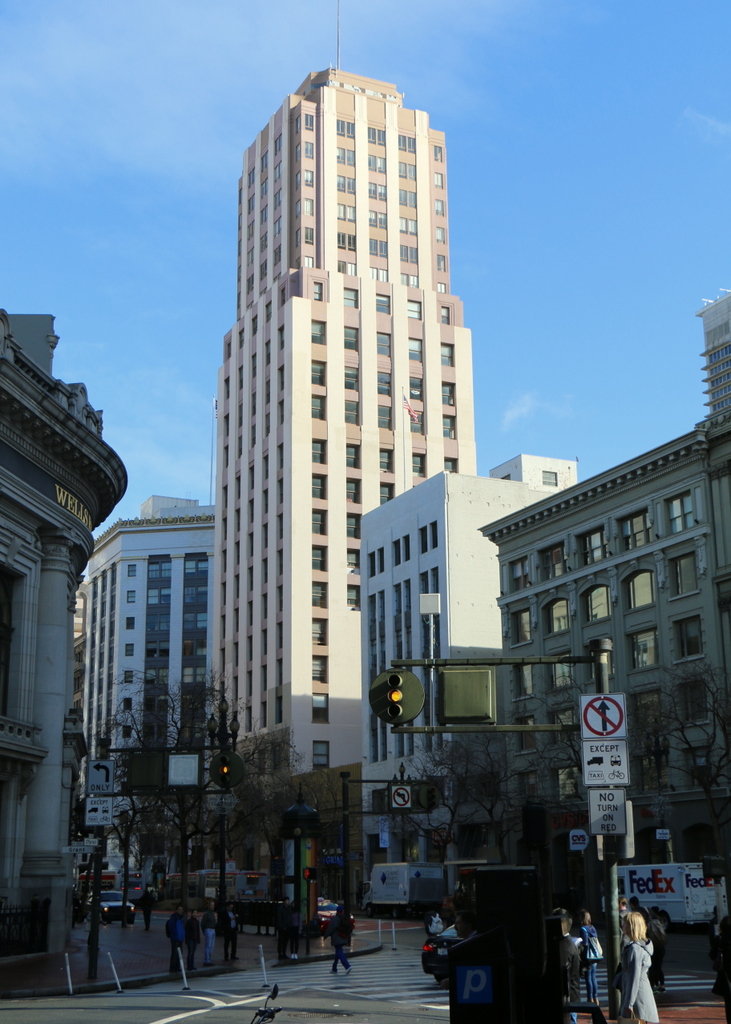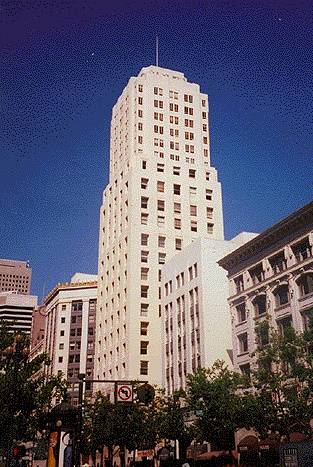
San Francisco’s Enduring Sentinel: The Story of the Call Building
Like a grand, frosted wedding cake rising sixteen stories above Market Street, the Call Building in San Francisco stands not merely as an architectural marvel but as a defiant testament to resilience, ambition, and the indomitable spirit of a city forged in fire and reinvention. Its cream-colored terra cotta, elaborate Beaux-Arts ornamentation, and distinctive dome have graced postcards and dominated the city’s skyline for over a century, whispering tales of seismic shocks, roaring fires, and the relentless march of progress.
To truly appreciate the Call Building is to understand its genesis in a city bursting with turn-of-the-century ambition. The year was 1898, and San Francisco was a burgeoning metropolis, a gateway to the Pacific, and a hub of innovation and wealth. Into this vibrant landscape stepped John D. Spreckels, the sugar magnate, shipping magnate, and newspaper owner, whose vision was as grand as his fortune. Spreckels owned the San Francisco Call newspaper and sought to erect a headquarters that would not only house his journalistic enterprise but also stand as a beacon of the city’s prosperity and his own formidable influence.
He commissioned the architectural firm of Reid & Reid – James W. Reid and Merritt J. Reid – who, along with Spreckels, envisioned a structure that would push the boundaries of West Coast architecture. The result was a 315-foot, 16-story skyscraper, crowned with a magnificent dome, which upon its completion in 1898, was the tallest building west of Chicago. Constructed with a then-revolutionary steel frame, clad in intricately detailed cream-colored terra cotta, the building was a masterpiece of the Beaux-Arts style, replete with classical columns, balustrades, and allegorical figures. Locals quickly dubbed it the "Little White Wedding Cake," a charming moniker that belied its structural gravitas and its role as a symbol of San Francisco’s soaring aspirations.

The San Francisco Call occupied the lower floors, its printing presses thrumming in the basement, while the upper floors housed various offices, offering unparalleled views of the city and the bay. The building was a bustling hub, a symbol of modernity, and a source of immense civic pride. It was designed to be beautiful, functional, and durable – qualities that would soon be tested in the crucible of one of America’s greatest natural disasters.
April 18, 1906, dawned with a seismic roar that would forever alter the course of San Francisco’s history. At 5:12 AM, a massive earthquake, estimated at a magnitude of 7.9, ripped through the city. Brick buildings crumbled, gas lines ruptured, and within minutes, the tremor gave way to an even more devastating force: fire. For three days and nights, the city burned, consuming an estimated 25,000 buildings and leaving over 200,000 people homeless. San Francisco was, by all accounts, reduced to ashes.
Amidst the apocalyptic landscape, a miracle stood tall. Though its interiors were ravaged by the inferno, its ornate dome partially collapsed, and its terra cotta façade scorched black, the skeletal steel frame of the Call Building remained staunch. While surrounding structures were leveled, the "Little White Wedding Cake" stubbornly refused to fall. Its modern steel-frame construction, a relatively new technology at the time, proved its worth against the combined might of earthquake and fire. Architectural historians often point to the Call Building as a living laboratory, a testament to the superiority of steel-frame construction over traditional masonry.
"It was a beacon of hope amidst the devastation," noted a contemporary observer, reflecting on the Call Building’s survival. "While the city burned around it, that building, though scarred, still stood, promising that San Francisco would rise again." And rise again it did, with astonishing speed and resolve. The Call Building itself was among the first major structures to be rebuilt and reoccupied, a powerful symbol of the city’s resilience. Within months, reconstruction efforts were underway. The dome was rebuilt, the terra cotta façade painstakingly repaired and cleaned, and the interior refitted, albeit with a more fire-resistant design. By 1908, the Call Building was fully restored, its presses once again rolling, its offices once again bustling, providing a tangible anchor for a city in the throes of rebirth.
The Call Building continued its life as a prominent office block, its name subtly shifting to reflect its enduring association with the San Francisco Call. In 1938, a significant renovation saw the replacement of the original dome with a more streamlined, Art Deco-inspired structure, reflecting the changing tastes of the era. This new dome, though different in style, maintained the building’s distinctive silhouette, ensuring its continued prominence in the evolving skyline.
Over the decades, the building changed hands and tenants, adapting to the demands of a dynamic city. It ceased to be the headquarters of the San Francisco Call (which later merged to become the San Francisco Call-Bulletin), but its name, the Call Building, stuck. It became home to a variety of businesses, from legal firms to tech startups, mirroring the economic shifts of San Francisco itself.
Today, the Call Building, now officially known as Central Tower, remains a vital part of San Francisco’s urban fabric. It stands proudly at the intersection of Market and Powell Streets, adjacent to Lotta’s Fountain, another earthquake survivor and a traditional gathering spot. While no longer the tallest building in San Francisco – a title now held by gleaming glass towers that pierce the clouds – its historical and architectural significance is undiminished. It holds a cherished place in the city’s collective memory, a silent sentinel that has witnessed the relentless transformation of its surroundings.
Architecturally, the Call Building is a masterclass in its style. The Beaux-Arts influence is evident in its tripartite division, grand scale, and rich ornamentation. The lower levels feature robust classical elements, inviting passersby with their stately presence. The middle section rises with a rhythmic progression of windows, and the building culminates in its iconic dome. The terra cotta cladding, once a technological marvel for its durability and aesthetic versatility, gives the building its distinctive cream hue, making it stand out amidst the grey stone and modern glass of its neighbors. Even today, one can appreciate the intricate detailing, the sculpted figures, and the delicate patterns that speak to the craftsmanship of a bygone era.

"The Call Building is more than just bricks and mortar; it’s a living archive of San Francisco’s spirit," says Dr. Emily Chang, a local architectural historian. "It embodies the city’s ambition, its ability to innovate, and its incredible capacity for recovery. Every time you look at it, you’re seeing a piece of history that refused to be forgotten."
Its legacy extends beyond its physical presence. The Call Building represents the very essence of San Francisco: a city that dares to dream big, that embraces progress, and that has proven time and again its ability to overcome adversity. It reminds us that while natural disasters can devastate, they cannot destroy the human spirit or the structures built with vision and fortitude.
As visitors and locals alike walk past its hallowed façade, they are walking through layers of history. They are seeing the vision of a sugar magnate, the ingenuity of pioneering architects, the scars of a catastrophic earthquake, and the triumph of a city’s rebirth. The Call Building is a landmark that transcends mere aesthetics; it is a narrative in stone and steel, a story of survival, a monument to the enduring power of San Francisco. It continues to stand, a testament to its past, a vibrant part of its present, and an inspiring symbol for its future, forever etched into the heart and skyline of the Golden City.


